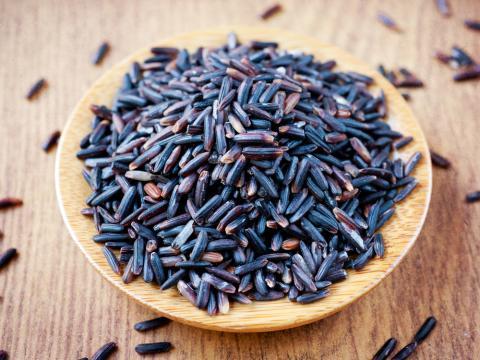
Wild rice is not actually rice at all, but the seed from a grass of semi-aquatic species found from southern Canada to the eastern United States along the Atlantic coastal marshes. It was the staple food for the Ojibwa and Chippewa people who gathered it by canoe and fire parched the seeds. They called it ‘manoomin' which means ‘good berry' and is much more accurate a nomenclature than the contemporary ‘wild rice.’ There are four varieties: Eastern wild rice grows along the Atlantic and the Gulf of Mexico coasts; the Northern wild rice is native to the Great Lakes region of North America and grows primarily in Minnesota, Wisconsin, northern Michigan, Ontario, Manitoba and Saskatchewan; Texas wild rice grows in a small area in central Texas along the San Marcos River; and the nearly extinct species Manchurian wild rice is native to China. The plant is an annual, growing up to approximately three yards tall. The thin seeds droop in clusters and are easily removed when ripe. The Ojibwa people continue to harvest the seeds in canoes. However, most of the wild rice that is purchased in stores are genetically altered and are cultivated in manmade ponds in Minnesota and California using chemicals, pesticides, and herbicides in their production. The seeds are rich in proteins, amino acids, fiber, vitamins and minerals.
Holistic healers find wild rice a valuable addition to their healing foods that benefits the body in many ways.
1. One serving of wild rice contains six-and-half grams of protein, thirty-five grams of carbohydrates and three grams of fiber. The protein content comes primarily from lysine and methionine and linolenic acid. Included in a serving are a substantial amount of B vitamins, vitamins A, C and E plus minerals of phosphorous, potassium and magnesium, zinc and folate.
2. Wild rice contains more protein than wheat and contains all of the essential amino acids. This makes it a valuable food for the growth and repair of bodily functions. Proteins are used to form cells, enzymes, antibodies and hormones.
3. Wild rice helps to strengthen the immune system and prevents and treats various viral infections. It promotes healthy skin and proper formation of tissues. It also is a catalyst for supplying vitamin A to the liver. It is helpful in the treatment of cold sores, burns, diaper rash and acne.
4. Containing a substantial amount of magnesium, it works with calcium to maintain a healthy skeletal system. It strengthens the muscular system, balances blood circulation and maintains a normal heart rhythm, making it a heart healthy food.
5. With a high content of antioxidants, wild rice controls free radicals from forming, thus protecting the body from disease. It is high in fiber which aids in a healthy digestive system and reduces cholesterol levels. It is low in calories making it a valuable aid in weight reduction.
True wild rice is just that, wild, and it is naturally organic.








